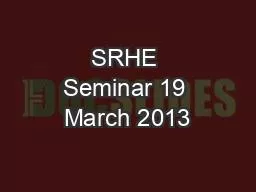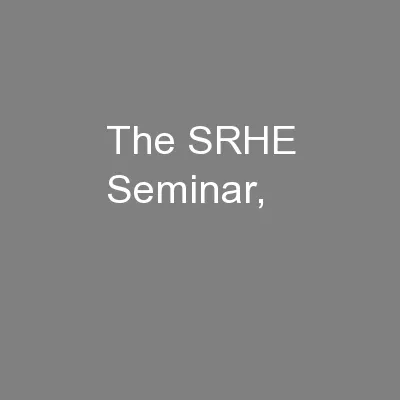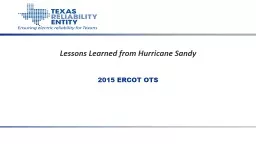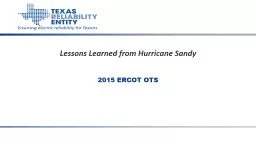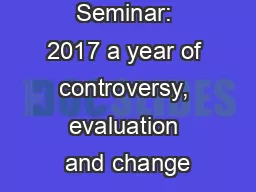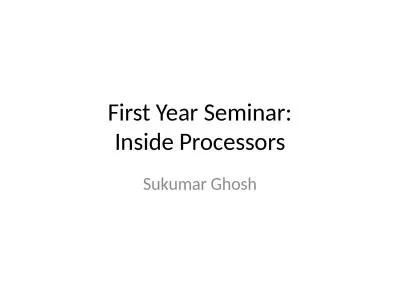PPT-SRHE Seminar 19 March 2013
Author : goldengirl | Published Date : 2020-08-29
Higher education provision in further education colleges some findings and methodological considerations Anne Thompson What is it HE in FE HE in FECs College based
Presentation Embed Code
Download Presentation
Download Presentation The PPT/PDF document "SRHE Seminar 19 March 2013" is the property of its rightful owner. Permission is granted to download and print the materials on this website for personal, non-commercial use only, and to display it on your personal computer provided you do not modify the materials and that you retain all copyright notices contained in the materials. By downloading content from our website, you accept the terms of this agreement.
SRHE Seminar 19 March 2013: Transcript
Higher education provision in further education colleges some findings and methodological considerations Anne Thompson What is it HE in FE HE in FECs College based HE HEFCE HE in FECs is already a distinctive part of the HE system While it is dangerous to overgeneralise about a diverse system HE students in FECs are more likely to be over 25 more likely to study parttime and more likely to come from areas with low rates of participation in HE than students in HEIs They are more likely to be studying foundation degrees and subdegree programmes such as HNCs and HNDs. spring 2008. Database Seminar Spring 2008. 1. Supervisor: Dr. Michalis Petropoulos. Presented by: Sergey Chernokozinskiy. Database Seminar Spring 2008. 2. Detecting Anomalous Access Patterns in Relational Databases. Frugal Innovations to . Standardisation. Impact on GDP?. Ajay . Ranjan. . Mishra. *, Prof . Jaideep. . Prahbu. **. *Chairman, FG Innovations, ITU. **Head of Marketing, JBS, Cambridge . Univ. , UK. ITU Workshop on . London. February 3. rd. 2012. Steve Rayner. School of Education. Oxford Brookes University. Leading . Professors?. A. cademic . leadership as . perceived . by ‘the led’. A RESEARCHER’S PERSPECTIVE:. Lessons Learned from Hurricane Sandy. Objectives . Compare . Superstorm . Sandy (October 2012) to Texas Gulf Coast past major tropical storms and hurricanes.. Explain . Superstorm . Sandy’s impact on the following:. Ethics. Definition: the rules of conduct for a particular class of human actions. What kinds of . actions. are right or wrong in particular circumstances?. Do you put your life at risk for the sake of others?. Lessons Learned from Hurricane Sandy. Objectives . Compare . Superstorm . Sandy (October 2012) to Texas Gulf Coast past major tropical storms and hurricanes.. Explain . Superstorm . Sandy’s impact on the following:. GRAP Implementation for 2016/17 & what is coming in 2017/18 & 2018/19. Presented by: George . Ducharme. CA (SA). 1. GRAP Implementation Topics for discussion. What is new in the 2016/17 GRAP Reporting Framework and what are the related implementation challenges?. 1. District . 6670. Welcome to the . District 6670 . Assistant Governor Training . Seminar. District Team Training Seminar | . 2. District . 6670. RI Theme . Wednesday, April 14, 2010. 4/14/2010. 1. DUSC Seminar. OSU Safety Training . Review and Update. Dan Harlan, Radiation Safety. 4/14/2010. 2. DUSC Seminar. Training Responsibilities. Supervisor/Principal Investigator. Setting the scene for DB . Janet Brown, Partner. PMI Trustee Seminar: 2017 a year of controversy, evaluation and change. 2. What developments are we going to cover?. 3. DB look back in anger? 2016. PMI Trustee Seminar: 2017 a year of controversy, evaluation and change. Introduction to SolidWorks. FRC 2468 Appreciate. Lewis Jones. FRC 2468 CAD . Seminar. 1. Overview. Week 1:. SolidWorks Introduction. SolidWorks Assembly: Mates. Week 2:. Assembly Project: Robot Assembly Using Parts Library. Speaker:Dr JuBo Yan Doctor, Cornell UniversityTopic: "Reference Dependence under Risk: An Experimental Examination" Chairperson:Assistant Professor Hong Fuhai Page 1 of 1Economics Seminar by Dr JuBo Applying for financial aid. How colleges make financial aid decisions. Financial aid award letters. How families can pay their share of college costs. Free resources available to help families. Attend a MEFA College Financing Seminar. Sukumar Ghosh. Welcome to this seminar. . Let us think where the processors are, how big or small they are, and how expensive they are. Note that these days everything is becoming “smart.”.
Download Document
Here is the link to download the presentation.
"SRHE Seminar 19 March 2013"The content belongs to its owner. You may download and print it for personal use, without modification, and keep all copyright notices. By downloading, you agree to these terms.
Related Documents

